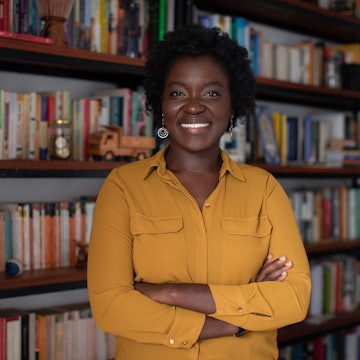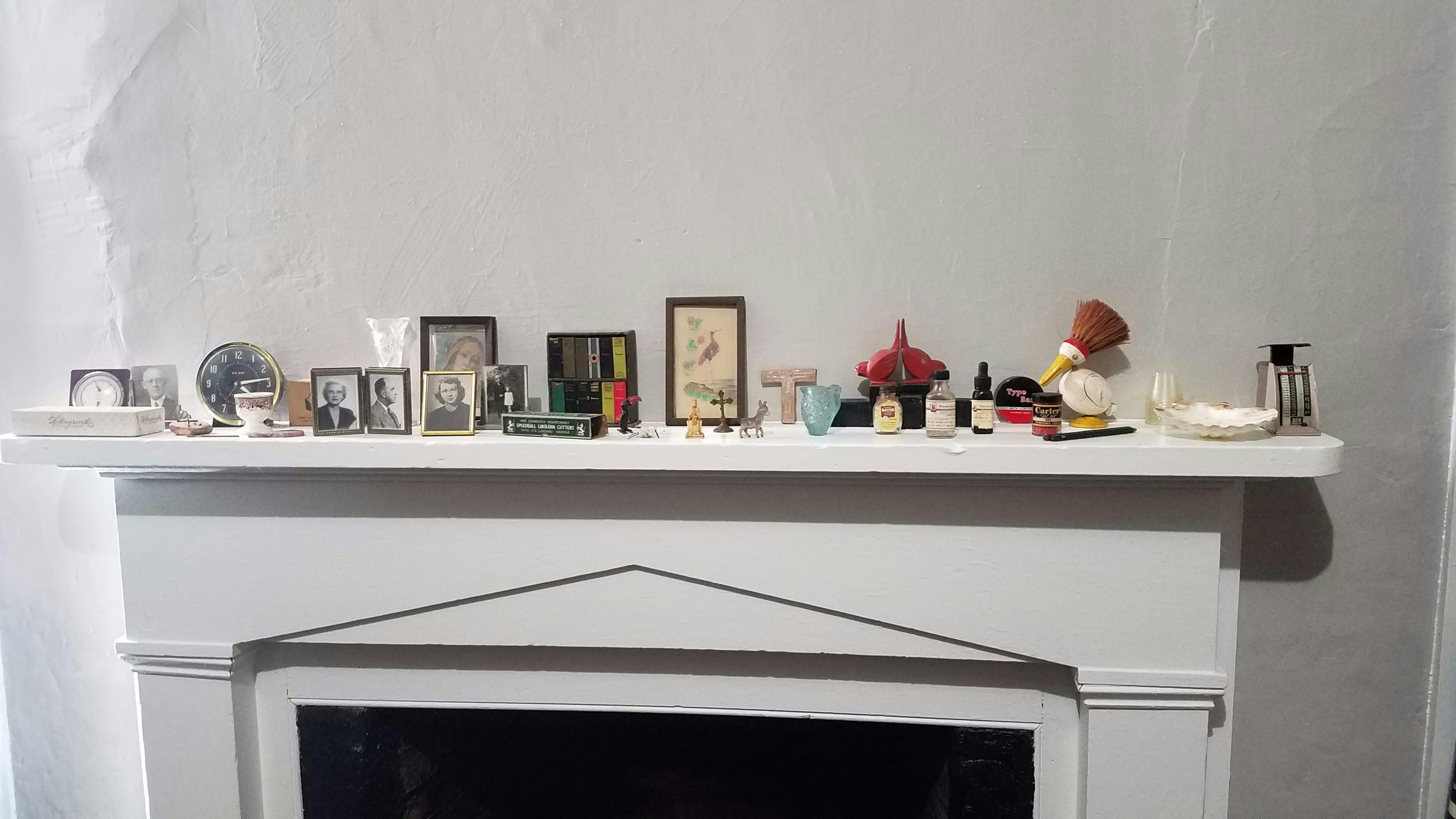
Nov 19, 20206 min read
Travelling While Black: "My skin color has created a box, and I am shoved into it"Jan 27, 2020 • 8 min read

Flannery O’Connor, the renowned novelist, short story writer, and essayist, once said, "When in Rome, do as you done in Milledgeville." She knew what she was talking about. Milledgeville, founded in 1803 as the antebellum capital of Georgia, is a charming, historic town an hour and a half’s drive east of Atlanta, and was home to Flannery O’Connor, one the most important American writers of the 20th century.
In 1946, O’Connor left Milledgeville to attend the Iowa Writers’ Workshop, then moved to New York City and Connecticut. Her departure only lasted five years, however. In 1951 at twenty-six years old, she was diagnosed with lupus (the same illness from which her father died) and returned to her childhood home on Greene Street in Milledgeville. Shortly thereafter, she and her mother Regina moved to Andalusia, the family’s farm, on the outskirts of town.

There, O’Connor wrote two novels, thirty-two short stories, and hundreds of commentaries, reviews, and letters – mostly while seated at her desk in her ground floor bedroom at Andalusia. In 1964, O’Connor died at the age of 39 from complications related to lupus. While her life was cut far too short, her legacy lives on at her beloved Milledgeville homestead, now a museum open for public tours. Most poignantly, O’Connor’s crutches still rest against her desk as if waiting for her to rise from her narrow bed and sit at her desk and tap tap tap on her typewriter’s keys.
When paying a visit to Milledgeville, do as Flannery did. O’Connor followed a fairly regular routine: early morning mass in town, a return to Andalusia for several hours dedicated to her work, then a return to town for lunch at the Sanford House (their fried shrimp was a favorite!), then back to Andalusia for rest, to tend to her beloved peacocks and to receive visitors.

First stop of the day for Flannery O’Connor, a devout Catholic, would have been 8am daily mass at Sacred Heart Church located in Milledgeville at the corner of Hancock and North Jefferson Street. The church was built in 1874 in the Gothic Revival style. Its interior is beautiful and spare and one can imagine O’Connor seated in a pew for daily devotions, perhaps offering up such an invocation as that which she writes in A Prayer Journal, published posthumously in 2013: “Oh dear God I want to write a novel, a good novel….If I have to sweat for it, dear God, let it be as in Your service.”
O’Connor’s great-grandfather, Hugh Donnelly Treanor, Milledgeville’s first Catholic resident, emigrated from County Tipperary, Ireland in 1824, and owned a prosperous water-powered gristmill on the Oconee River. Her great-grandmother, Johanna Harty Treanor, also an Irish immigrant, donated the land for the church.
If time allows, take a morning stroll along the Oconee River Greenway Trail in town. It's a paved stretch with fishing piers and other trails where you can keep watch for the blue heron, snowy egrets, and the very occasional alligator.

O’Connor lived at 311 West Greene Street during her high school and college years. When she was 13, her father’s health declined and the family moved from Savannah to Atlanta for a brief stint, before moving into the Greene Street home. She briefly lived here again on her return to Milledgeville in 1951. This grand 1820 antebellum mansion, complete with Ionic columns, is number 10 on Milledgeville’s Historic Walking Tour and is still maintained by the O’Connor family as a private residence.
The Cline-O'Connor-Florencourt House was first built for Georgia’s Governor, who lived here from 1838-1839 until the official Governor’s Mansion was completed. The Cline family, O’Connor’s maternal relatives, then purchased the home. While visitors can’t enter the property, it doesn’t take much imagination to peer over the low, crumbling brick wall into the expansive yard and imagine Flannery sitting on the back steps sketching her now famous cartoons.

O’Connor once acerbically said, “Everywhere I go I'm asked if I think the university stifles writers. My opinion is that they don't stifle enough of them. There's many a best-seller that could have been prevented by a good teacher.”
Thankfully, O’Connor was not so stifled during her university years at Georgia State College for Women. While an undergrad, O’Connor majored in Social Sciences and minored in English (of course!). She served as the art editor for the school newspaper, The Collonade, and was the editor for the literary magazine, The Corinthian.

It is impossible to miss the university’s gorgeous front campus on East Hancock Street. Here imposing, graceful neoclassical buildings overlook a sweeping front lawn shaded by the very same oak and pecan trees that towered over O’Connor. The university was first founded in 1891 as Georgia Normal and Industrial College, a two-year women’s technical school which rejected the “moonlight and Magnolia” Southern belle stereotype.
The school’s first president, J. Harris Chappell envisioned an egalitarian institution where, as he stated, "a millionaire's daughter...could not be distinguished from the poorest girl in the school." In 1922 the two-year teachers' college became the four-year degree-granting institution Georgia State College for Women. By 1967, however, the school went co-educational, and since 1996 has been known as Georgia College & State University.
GCSU’s Ina Dillard Russell Library maintains the Flannery O’Connor Special Collection and it is open to the public with an advance appointment. Visitors can view items from O’Connor’s days as a student at Peabody High School and at Georgia State College for Women including over 6,000 manuscript pages (early notated drafts of her novels and short stories), as well as O’Connor’s personal collection of books, journals, letters, drawings, and memorabilia (including report cards!).

Andalusia farm, located off U.S. Route 441, just 3.5 miles outside Milledgeville’s town center, was O’Connor’s home for the last thirteen years of her life and the inspiration for much of her creative work. O’Connor’s solitude and relative seclusion allowed her to focus her eye and imagination on the world just beyond her window for fictional inspiration: her family’s dairy farm and its tenants and laborers, her town neighbors, and her own immediate family. Today, the entrance to Andalusia is across from an enormous car dealership and fronts the busy, strip mall-lined 441, but the woods still provide buffer against the thrum of traffic.
The farmhouse waits in its imposing, serene simplicity at the end of a long, newly-paved road that winds past fallow pastures, woods, a small lake, and several outbuildings. The screened-in front porch is lined with rocking chairs, and around the back of the house, a peacock and peahen strut around their pen. In a famous photo, O’Connor stands on the porch steps in her black dress and pearls, supported by her crutches, and smiles with some benevolent consternation at a peacock pecking at her feet.
In a letter dated August 2, 1955 to her friend Betty Hester, O’Connor writes,"I live on a farm and don't see many people. My avocation is raising peacocks, something that requires everything of the peacock and nothing of me, so time is always at hand.”

For many years, the 544-acre historic property was maintained by the Andalusia Foundation but donations could not sustain the necessary repairs and restoration. In 2017, the foundation gifted the farm to Georgia College and State University. While the ambitious and extensive restorations will take years to complete, Andalusia has recently reopened to visitors. The university has loaned Andalusia some of O’Connor’s most treasured items: O’Connor’s beloved bookcases, a typewriter, her desk, and personal knick-knacks.
Visitors can wander the extensive grounds as well as various outbuildings which include Hill House, the farm’s original 1820 Plantation Plain style residence, the water tower and well house, the cow and the horse barn, the milk cooling shed, the equipment shed, workers’ houses, and the peacock pen which is still home to a resident peacock and peahen.
Guided tours of the family home, including the dining room, parlor, kitchen, and O’Connor’s bedroom, are well worth the time, and take place on the hour. The original furnishings include the drapes handmade by O’Connor’s mother as well as the Hotpoint refrigerator (“the kind that spits ice at you,” O’Connor once wrote) that she bought in 1956 when she sold the television rights for The Life You Save May Be Your Own.

At day’s end, as fitting and moving closure, visitors might wish to make a pilgrimage to O’Connor’s grave in Memory Hill Cemetery on West Franklin Street in Milledgeville. O’Connor’s grave is located along the back fence beside that of her mother and father. It is easy to miss her grave as – contrary to expectations – it is just one of many unassuming granite slabs in the cemetery. No fancy markers, no writerly inscriptions. Just a simple carved cross with the Christogram “IHS," and the basic facts of her life: her full name (Mary Flannery O’Connor) her parents’ names, and her dates of birth and death.
Visitors place tributes on her stone: peacock feathers, small figurines, pennies, pebbles, books, and pens. The perfect modest and spare memorial to the woman who wrote in A Prayer Journal, “Don’t let me ever think, dear God, that I was anything but the instrument for Your story-just like the typewriter was mine.”